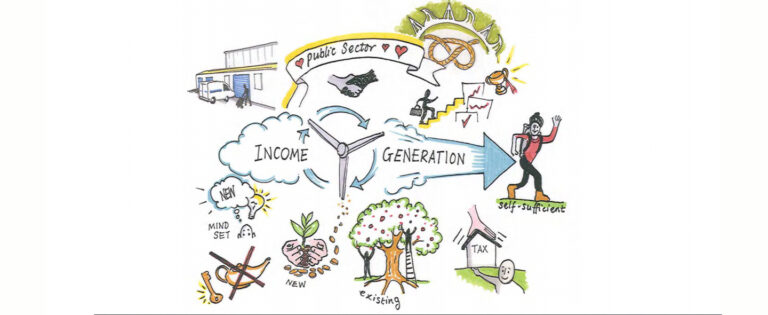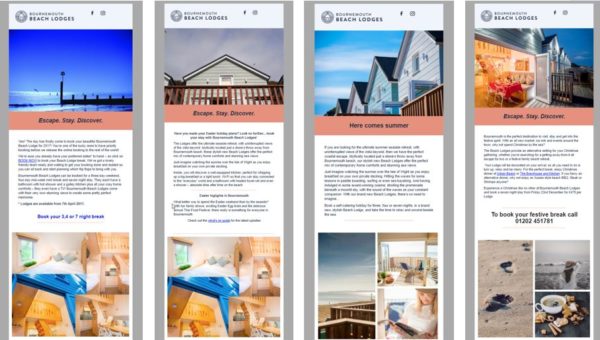
Last week, more than 100 public sector comms and traded services professionals tuned into Granicus’ UK webinar “Income Targets and the Comms You Need to Succeed,” to hear how local government organizations are generating their own income through a range of initiatives – from community lottery schemes to luxury beach lodge rentals to email advertising. While the webinar used examples from the United Kingdom, the topic of income generation is increasingly salient to public sector professionals in the United States. You can view the slides here and watch the recording here.
At the heart of these commercial ventures is good communication. There is a clear vision for what the councils need to achieve, both in financial terms and softer targets such as delivering a positive brand experience or increasing their potential reach through a large digital following. The comms is deliberate. It’s strategic, and, with a beady eye on comms performance tracking, the strategy is constantly being refined to help maximize the impact on the end goal – revenue.
The webinar comprised four parts, moderated by Granicus’ Glen Ocsko.
First, Dan Slee of comms2point0 discussed the fractured landscape of income targets in the public sector communications profession and teams’ ability (and inability) to meet them.
Dan revealed that 20 percent of comms teams currently have an income target, which is on average £75.6k (~$100,000) but can be in excess of £200k (~$265,000)! Most teams are finding it more and more difficult to bring new money into their organization, especially given a shortage of resources and skills to do the job properly. You’ll find a summary of the findings from the new research Dan cited in this infographic, and the full report in the UK whitepaper, “Income Targets: Comms Entrepreneurs, Income Warriors and Three Paths Forward”.
According to Dan (and the 12 enlightening case studies in the whitepaper), it’s not all doom and gloom. Many comms teams are already putting down strong roots to grow their money trees, testing a range of approaches with varying degrees of “success.”
Dan’s best words of advice for anyone thinking about embarking on commercial adventures in local government?
Next, Nicola Goode, Marketing Manager at Bournemouth Tourism talked about Bournemouth’s objective to create a “world-class seafront that will enhance the natural assets of the coastline and create public spaces and facilities to inspire new generations of visitors.”

Fifteen luxury beach lodges are part of a £5.9m-investment ($7.8m) into this strategy, and Nicola’s 10-strong team is involved in helping to promote these lodges as “destinational experiences,” targeting families, DINKs (dual income, no kids), SINKs (single income no kids) and empty-nesters. With an objective to generate income and establish the offering as a five-star holiday experience, the team is delivering a multi-channel (offline and online) integrated marketing campaign which has achieved significant results so far.
For example, their advertising and PR campaign secured national coverage in The Guardian, The Times, Rough Guide, and Time Out and has contributed significantly to new bookings. The email bulletins promoting the lodges achieve consistently high open rates of ~50 percent (up to 79 percent) and an average click rate of ~10 percent (up to 22 percent), above industry benchmarks. With a conversion rate (from click-throughs to actual bookings) of approximately 7 percent across all bulletins so far, email is proving extremely effective at generating new revenue.
Nicola shared that in the first 24 to 48 hours of sending one email bulletin promoting Christmas breaks, five bookings originated from the bulletin. With each booking worth between £275 and £650 ($360 to $860), that’s a great return from one single send. Go email!

Nicola’s top tips for launching a new chargeable service?
Following this little jaunt to the seaside, Glen Ocsko led us north to South Staffordshire, where Imre Tolgyesi, Commercial Partnerships Manager for South Staffordshire Council and team are spearheading the council’s Efficiency and Income Plan (a strategy which is delivering a net profit of £600k—nearly $800,000).
Imre explained that income generation is now at the heart of the organisation and all employees are empowered to contribute new ideas to the plan. One key stipulation: Each new venture must directly benefit the local community. Their mission to “save money, generate income, and do things differently” is firmly embedded in the council’s culture, and you can read more about their approach here in the whitepaper.
Initiatives range from the Community Lottery scheme (which puts 60 percent of profits into good community causes), to a Business Hub which rents shared working space and consultancy services to SMEs and entrepreneurs, to the Good Life South Staffordshire – an app and website which connects local people to local businesses.
As local businesses promote their services (through the online and offline presence of this platform), the council generates advertising revenue at the same time as supporting the local economy and helping residents’ money go further.
Imre reinforced how important it is to:
To round off the webinar, Dave Worsell, Managing Director of Granicus Europe, presented a compelling case for generating income by selling ad space in your email bulletins. For those who don’t have the time or skills within their team to proactively sell ads and manage the contracts, you can work directly with Granicus and the Council Advertising Network which can manage everything for you.
Building a large subscriber base, knowing what interests each subscriber, and being able to segment audiences and track engagement rates make email a unique and attractive advertising opportunity for local and other relevant businesses. Many councils are already reaping the rewards of having nurtured their email audience to a significant level – for example, see the Havering case study in the whitepaper (they’re able to reach the equivalent of 58 percent of the local population via email bulletins and generated £18k—about $24,000—in 12 months by selling ad space).
With email still holding the top spot for best ROI (in public, private and not-for-profit sector marketing), it’s not surprising nearly 60 percent of businesses are upping their investment over the next 12 months (source: MyEmma).
If you want to get your email marketing performance up to scratch—to maximise engagement with your messages and the return from ads—be proactive about monitoring the top five metrics, A/B test and continually refine your work to make improvements. Every little bit really does help. For example, a stronger subject line or clearer call-to-action button could be the difference between 10 families purchasing tickets for your event or 100 ticket sales which make the event cost-neutral or even profitable.
Want to learn more about how your organization can use income generation? Check out Granicus UK’s whitepaper or contact us.